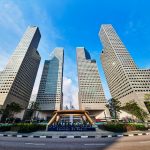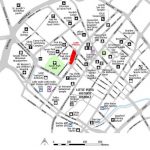Investment and residential property sectors outpaced other sectors to enjoy a robust recovery in Q1 2021

Amid signs that the Singapore economy has turned the corner and is on track to a projected growth of between 4% and 6% for the year, investment and residential sales outpaced other sectors to enjoy a robust recovery in Q1 2021.
Mr Paul Ho, chief officer at iCompareLoan, said: “It was already quite evident even before the pandemic that certain property sectors were performing better than others in sales. The Covid-19 crisis has only accentuated this.”
Investment sales
Investor sentiment and activity in the property sectors improved in Q1 2021, driven by the economy’s Phase 3 reopening late last year and the introduction of the vaccination programme shortly after. Private investors were active in the quarter and accounted for $4.8bn worth of transactions in the different property sectors, even in the absence of government land sales. That was nearly double the $2.5bn transacted in the preceding quarter.
The pronounced uptick was also reflective of the gradual recovery in the construction sector, which posted a more moderate contraction of 20.2% y-o-y in Q1 2021, down from 27.4% in the preceding quarter.
The strong performance was led by the residential and office property sectors, which posted total transaction amounts of $1.8bn and $1.6bn respectively, or 39% and 34% of Q1 2021’s total investment sales.
EDMUND TIE’s senior director of research and consulting, Mr Lam Chern Woon said: “The substantial recovery of transaction activities this quarter attests to the continued attractiveness of Singapore properties as investment assets. Allianz Real Estate, for example, recently acquired a 50% stake in prime office building OUE Bayfront for $633.8 million.”
“With the mass vaccination programme steering the economy back to normalcy, investment activity is anticipated to be bolstered for the rest of 2021,” he added.
Residential
Amid a low interest rate environment, ample liquidity and the wealth effect of rising financial markets, total private home sales volume in Q1 2021 reached 8,100 units, up 16.9% from 6,929 units sold in Q4 2020.
New sales led the surge, recording a 34.2% increase over the preceding quarter with 3,493 units transacted, while the resale market posted a relatively modest quarter-on-quarter uptick of 6.5% in comparison.
Mr Lam said: “Demand in the primary residential market has remained strong due to a brisk flow of new launches. Projects with good locational and site attributes have proven to be highly popular among buyers.”
As at end March 2021, The Reef at King’s Dock and Midtown Modern – both launched in Q1 2021 – enjoyed take-up rates of 86% and 82% respectively.
Mr Lam added: “Timely government intervention during the worst of the pandemic last year and beyond helped kept many businesses afloat and jobs intact, which in turn supported demand for homes.
“With the mainstream economic recovery now underway and the expectation of more launches ahead, we expect residential demand and prices to improve for the rest of the year.”
Office
Rents of premium grade offices held up well in Q1 2021 as corporates – especially those in the technology, fintech and finance sectors – embarked on a flight to quality.
The recovery in the top segment of office space came on the back of the Phase 3 reopening in December last year, while sentiments were also buoyed by recent government announcements that working from home was no longer the default arrangement and up to 75% of employees could return to the workplace at any one time.
Mr Lam however cautioned that the relatively energetic uptake in the premium office sector was due to a confluence of localised factors not necessarily reflecting broader economic fundamentals.
He said: “The upcoming redevelopment of AXA Tower and Fuji Xerox Towers has injected demand into the market as displaced tenants look for new premises. Additionally, corporates that are doing well are taking advantage of rent correction and compression during the downturn to upgrade to premium office space.
“Overall demand is still soft as net absorption islandwide declined from 390,000 sq ft in 4Q 2020 to 74,000 sq ft in 1Q 2021, and major banks are also seeking to rationalise their operations and reduce their physical office space.”
“The jury is still out on the ideal hybrid working model,” he added, “and we are likely to see a fair degree of variations in the office-home split arrangements across industries and job functions.”
The office sector as a whole is expected to recover at a more gradual pace in tandem with the improving job market, which is driven by various job support and conversion schemes. Office rents will likely see a bottom during the year.
Industrial
The outlook for the industrial sector remains relatively bright, as the Government continues to ensure that Singapore remains a competitive manufacturing hub, especially for the pharmaceutical sector.
In addition to interest from major multinationals – such as Thermo Fisher Scientific, Sanofi and Digital Realty – in setting up shop here, substantial industrial investment sales amounting to nearly $900m in Q1 2021 points to an active market preparing for an eventual upturn.
Retail
Retail sales rose by 7.7% in February 2021 compared to a year ago, marking the first month of growth since January 2019. On the other hand, the share of online sales dipped further to 10.1% in February compared to 14% in last November. At its peak in May 2020, the share of online sales was 24.9%, driven by the national lockdown.
Mr Lam said: “As the economy opens up further in Phase 3, consumer demand has returned to physical retail to a certain extent, and with more people returning to the workplace from 5 April, merchants in the central area can look forward to higher footfall.”
“While the circuit breaker period of April and May last year accentuated the convenience of online shopping,” he continued, “it also demonstrated the primary need for social interaction.”
“Although the growth of e-commerce has been set in motion, there is still a role for physical retail and placemaking activities, as consumers still need avenues for socialisation,” he added.
Despite the challenging landscape, it not all doom and gloom for brick-and-mortar retail. According to Mr Lam, the current climate is opportune for retailers to “level up the service quality of their staff”.
Mr Lam said: “Even as novel retailing concepts become a new norm, there is still nothing like a warm and engaging service experience to attract customers and build brand loyalty.”
“The soft rental environment also allows for aspiring entrepreneurs to market-test their concepts, either as standalone retail or in a co-retailing platform,” he added.
As retailers evolve in response to challenges, co-retailing presents itself as a viable option for smaller players or entrants who may otherwise struggle with higher rental overheads. Makers’ Market, for example, now occupies an entire basement in *SCAPE, and offers ample space and opportunities for merchants keen to explore this sharing model.
Amid continued border restrictions and flexible work arrangements, retail rents are however expected to trade sideways for the rest of the year. A bright spot would be suburban retail, which cater directly to the needs of residents in their catchment. Suburban rents will post an increase for the year, tempered slightly by the new forthcoming supply.






